Free download: Top 10 Natural & Easy Remedies for Joint Pain from Home. Learn these helpful remedies.
You are standing at the bottom of that dreaded staircase once again. All you want is that maroon blouse from the armoire in the attic. Why would climbing 13 six-inch elevations feel like surmounting Mount Everest and cause your knees so much agony? Keep reading if you have knee pain with stairs. Written By: Coach Todd and originally posted on sixtyandme.com
You ponder your options…
“Ok, maybe I should go at a slight angle this time.”
“Or maybe… if I put more weight on the railings.”
“Nope. I got it. I’ll sing the Hokie pokie and change the key on each step. Yep, that should do it.”
Battles with staircases rage on across households every single day. And the variations on how to get up and down those steps would make a Texas Hold em card counter spinning in circles.
Thankfully, strengthening your knee using a few key exercises can make climbing up or downstairs easier and pain-free.
Table of Contents
Knee Conditions That Can Cause Knee Pain When You Climb Stairs
There are many health conditions and risk factors behind why when you climb stairs the knees may start to hurt.
These knee problems could be joint pain related to an underlying cause of natural wear and tear in the knee, such as with knee arthritis. Knee arthritis tends to cause a stiff knee that really can give you trouble with stair climbing.
Maybe your knee pain is related to an overuse injury, such as with patellofemoral pain syndrome. This is pretty common in athletes, such as runners (a.k.a. runner’s knee) and cyclists.
This overuse injury can cause make the knee hurt due to subsequent inflammation, leading to a stiff knee and sometimes muscle weakness because you haven’t been able to use the knee regularly with this persistent pain.
Perhaps the cause behind your knee pain is a more severe knee injury, such as a muscle tear, sprain, or bone fracture. With these types of injuries, you’ll really need to follow professional medical advice in order to avoid further damage to the knee. This advice may involve you temporarily avoiding stair climbing.
More generally speaking, if you don’t have a painful condition that you’re aware of outside of using the stairs, the problem may be weak leg muscles. Weak leg muscles won’t support the knee very well when using the stairs.
This can then cause knee pain due to poor form and strain on the joint and muscles trying to use these weaker muscles.
4 Key Muscles That Support Your Knees When Climbing Stairs
I’m not going to teleport you back to your Mrs Brown’s high school anatomy class and teach you the origins and insertions of the muscles in your knee.
However, if you were a formula one race car driver, wouldn’t you at least want to know the location of the brake and gas pedal?
When you know the knee muscles that help you get up and down the steps, you can engage them more effectively and bring greater stability and strength to each step.
1. The Quadriceps (aka “The Thigh”)
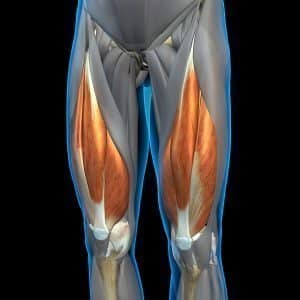
The quadriceps are the front part of the thigh. When your 3-year-old grandbaby Emma is cuddling on your lap, she’s resting on your quads.
The part of this group of muscles that connects to the knees is responsible for actively straightening the knee from a bent position.
This muscle group is really important for stabilizing the knee when going down the steps (so that your knee doesn’t buckle) and is one of the key muscles to help you walk upstairs.
2. The Hamstrings (aka “The Hammies”)
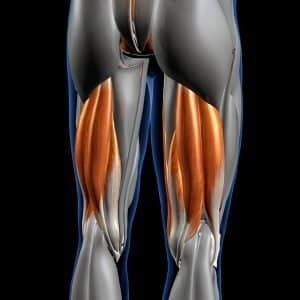
Hammies are the muscles on the back part of your thigh. They are the ones responsible for actively bending the knee.
They are also great “hand warmers” after shoveling the driveway this winter. Give it a try. Your hands will be nice and toasty.
3. The Glutes (aka “The Rump Muscles”)
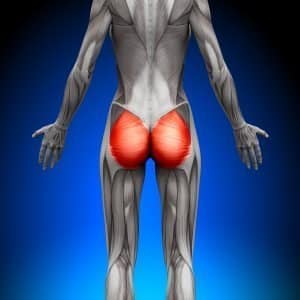
Now on to the king knee muscle for stair climbing. I don’t think I need to remind you where your rump is located.
The glutes, while of course aren’t directly connected to the knee, play a large role in helping you with stair climbing.
I’ll give you some hints on how to use your glutes for pain-free stair climbing but we have one more muscle to discuss.
4. The Core (aka “The Abs”)

Any personal trainer will proclaim “keep your core tight”. But why is this important…. especially when climbing stairs?
The obvious answer is to help stabilize your body. But there is more to it than that. When you tighten your core you help tilt your pelvis up just a smidge. Think of your pelvis like a seesaw.
Most people’s seesaws are horribly unbalanced. It’s like a 400lb sumo is sitting on one side. When you tighten your core, you help tilt the seesaw back toward a neutral position.
This can ease pressure on several of the muscles and nerves that travel in and through your knee.
Additionally, having a strong core will help improve your balance. Having poor balance when trying to use the stairs is never a good thing.
Even with holding on to railing, if you have poor balance, other parts of your body (primarily in the legs) will try to compensate to keep your more stable and steadier.
These compensations could place more strain and stress on certain muscles and joints, such as around the knee.
Stay with me and I’ll teach you a handful of exercises to bring even greater balance to your pelvis but let me address a few common questions about knee pain and stairs first.
What’s the Difference Between Going Up Vs Going Down the Stairs?
Believe it or not, climbing up the stairs versus climbing down the stairs are two very different movements.
When you go down the stairs, you are placing direct stress on a straightened knee joint. Unlike walking where you can glide into each new step, on stairs you have a gentle drop into each new step. It’s gentle, but it’s still a drop.
If you have conditions like chondromalacia patella (cartilage under the knee cap that has deteriorated) or arthritis pain due to osteoarthritis (inflammation inside the joint), it can be especially painful for the affected knee.
Why? Well, if you have less cushion inside your knee, such as worn down or damaged cartilage, the stress from your weight stepping down can cause knee pain.
When you go up the stairs, you place indirect stress on a bent joint. So it’s less direct stress on the knee joint itself, but it’s added stress on the ligaments and tendons around the knee.
Look at the picture below. The tendons and ligaments in your knee have to stretch in order to get into the next step.
Another factor to consider is that muscles contract differently going up stairs vs. going down stairs.
For example, the quads perform a concentric muscle contraction going up the stairs. This means the muscles shorten during the contraction.
Whereas, the quads perform an eccentric muscle contraction going down the stairs. This means the muscles lengthen during the contraction.
Why Can Exercise Help Reduce Knee Pain While Using Stairs?
Research has shown that exercise, especially isometric, no-movement exercises can reduce pain.
Isometric exercise can improve symptoms of knee osteoarthritis, as well as other conditions that cause knee pain. And of course, strengthening the entire knee will make climbing stairs much easier.
Alrighty, let’s dive into the exercises!
4 Essential Knee Exercises to Making Climbing Stairs Easier
1. The “Mini Side Stair” Exercise
Whoever said, “If you don’t use it, you lose it” was a wise person. I think it might have started with my great uncle Al but I can’t be sure about that.
The same thing is true for stairs. Mini dosages of stairs can help you prepare for the real thing.
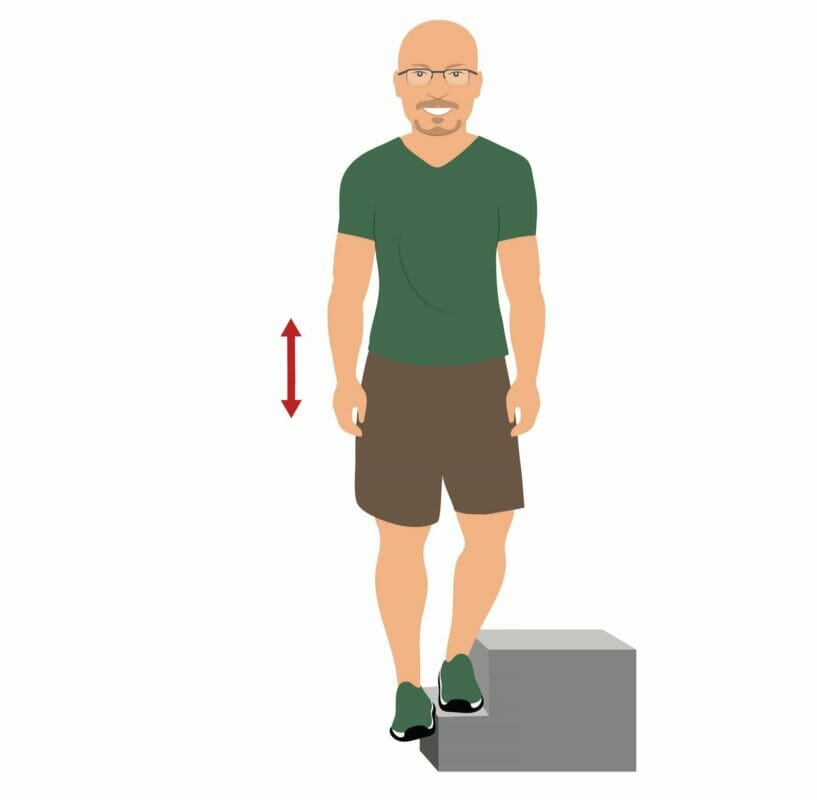
Use a phone book or a 3-4 inch step. Position yourself parallel to the step because you’ll be going up sideways.
Why? When you practice going up the step sideways, you naturally engage your glute muscle which is a key muscles which are key in stair climbing.
So you are training your body to fire up the right muscles when you practice sideways.
Make sure you have a chair on the other side for balance.
Start with the leg that often gives you trouble and pain. Lift your foot up and place it on the step. Now that your foot is on the step or phone book, lift your body up.
3 Important things to think about:
- Think about using your glutes, rump muscles, to drive you up.
- Try to press up while putting pressure on the outer portion of your heel. Sometimes, your ankle may be weak and collapse inward which can cause misalignment. By thinking about putting pressure on the outer portion, this will help keep your ankle in alignment and fire up your rump perfectly.
- Drive your knees outward (more on this in the “Gold Nugget Tips” section below.)
Stand up fully. When you are ready to step down. Follow the same steps as above. Ie – Put pressure on your outer portion of the heel and keep the knee over the second toe.
However, you are going to make one slight exception. Instead of focusing on your glutes to lift you up, before you step down, squeeze your thigh muscles tightly.
Remember these crucial muscles are stabilizers in this movement. So tightening them will help build strength, in proper form and prepare you for “game day” aka, your staircase.
Do this exercise in a controlled manner 10 times before switching to the other leg.
2. The Elevated Wall Sit Exercise
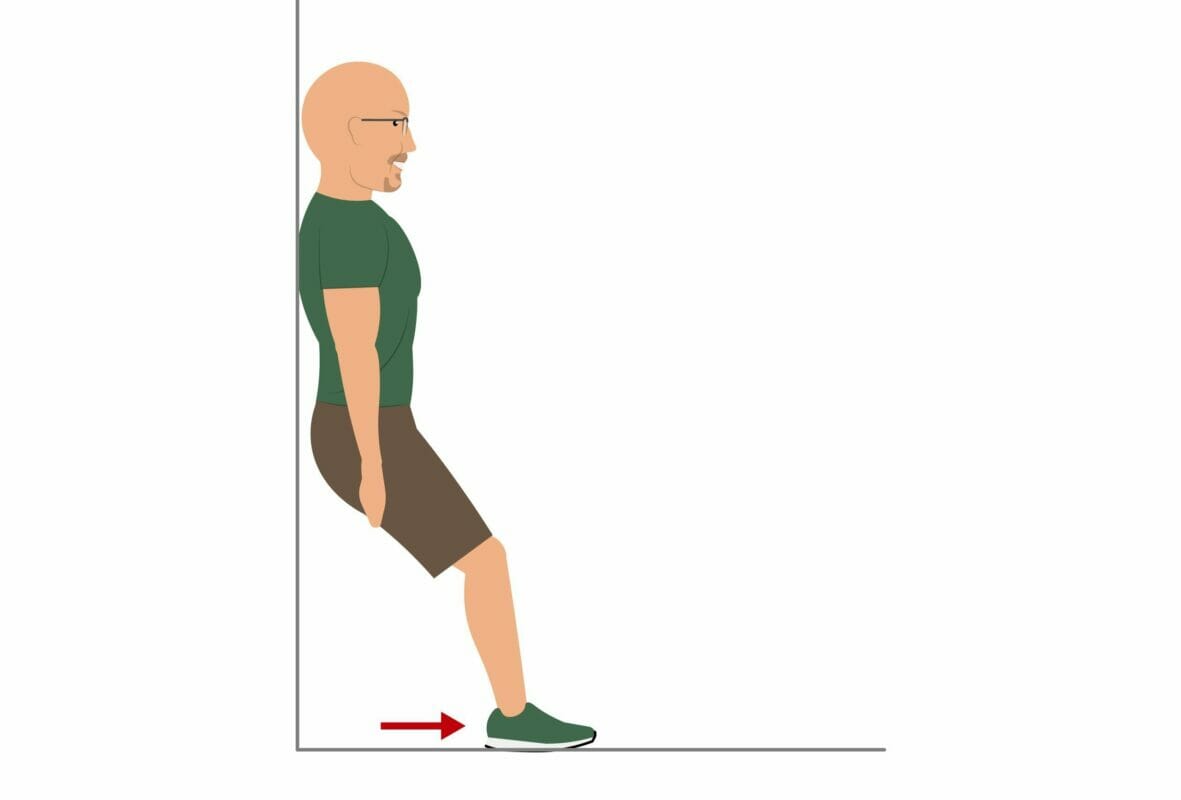
Stand with your back to a wall. Step out about two feet from the wall. Slowly slide down the wall until your knees are at a 45-degree angle. Hold this position for 20 seconds. Rest for 30 seconds.
Repeat 3 times.
If you have knee issues, I recommend starting at a 45-degree angle first rather than a 90-degree angle. This will help you build strength around your knee and prepare you for stair climbing.
This exercise is weight-bearing so it helps build stronger bone density and strength. But since it’s an isometric (you are not moving the joint), it puts less stress on the knee.
3. Seated Floor Push
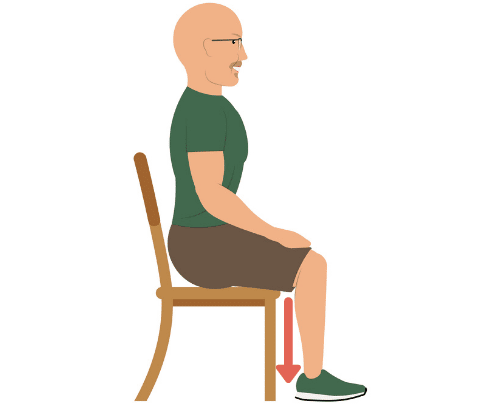
Sit down in a chair with your spine neutral (not slumped over and not arched back). Line your heels up so they’re underneath your knees.
Push your heels into the ground while simultaneously squeezing your glutes.
You’ll know you are doing this exercise properly if it feels like you are about to stand up, but not generating enough strength to do it. Hold the position for 10 seconds. Then rest for 5 seconds.
Repeat 5 times.
Remember when I told you that your glutes are some of the most important muscles for climbing stairs? This exercise isolates and strengthens them along with your hammies.
4. Seated Wall Kick
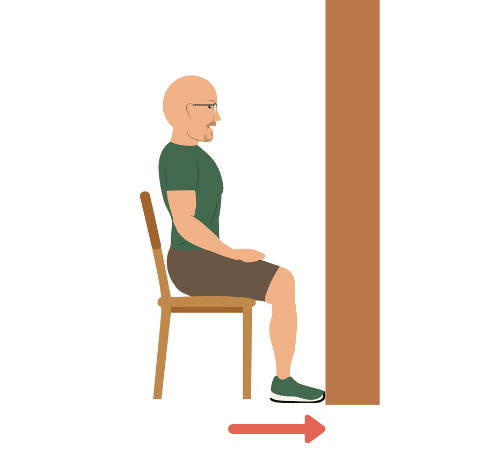
Sit in a chair facing a wall with your knee bent at a 90-degree angle. You’ll want your toes a few inches from the wall. Extend your leg out while pressing your foot against the wall. Hold for 10 seconds. Then relax.
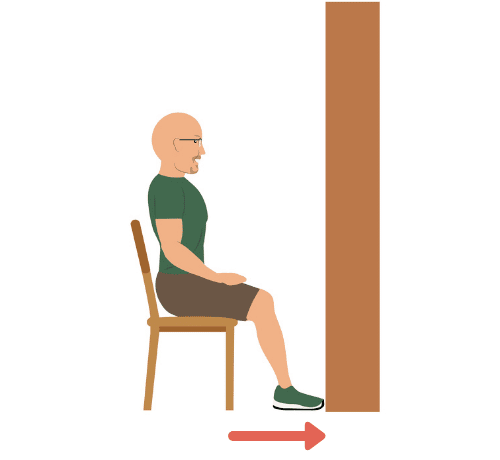
Now scooch your chair back a few inches. Repeat the same press for 10 seconds. Then relax. Scooch your chair backward a third time and repeat.
This exercise is also an isometric stabilizer so it is safer on the knee joint but strengthens the all-important quadriceps muscle.
These are the key stabilizer muscles when going down the stairs and an important helper muscle group when going up. When you do the exercise at three different angles, you are strengthening different parts of the quads.
Quick Tip: Wear shoes. You are pressing your toes against the wall so it’s good to have shoes that will absorb the pressure, not your toes.
Now if these exercises feel too challenging, you can start off with more gentle knee exercises from bed.
10 Gold Nugget Tips To Make Stair Climbing a Breeze For Your Knees
Go get an index card so you can write these down. No seriously, I’ll wait. Ok, got one? Good. Here are ten gold nuggets to help you climb or descend stairs like you were floating on air.
Practice these individually so you build a habit around each of them and your body will remember to do them like brushing your teeth.
- Drive with your glutes (aka butt muscle) when climbing up. Make it feel like your glutes are doing all the work to propel you upward.
- Drive your knees outward. This will provide greater stability and strength. Put another way, don’t let your knees collapse inward when going up or down. Pressure should be outward, not inward.
- Line up your knee with your second toe. You want your knees tracking properly. Keep them in line with your second toe and you’ll do just that.
- Point your toes outward just slightly. This will help your knees track as well and help prevent your knees from collapsing inward.
- When climbing upward, feel pressure on the outer portion of your foot, especially your heel. Why? Two reasons.
First, this will, again, help prevent your knees from collapsing inward. Secondly, when there is a weakness in your knees, they often “wobble” when you are doing difficult movements like stair climbing.
When you focus on your weight distribution to such a small degree, it can help minimize the wobbling of your knees.
- Tighten the abs and try to tuck your pelvis in as much as possible. This will help align the pelvis.
- On days where your knees are especially achy, lead with your better knee. Some days it’s okay to avoid stairs but movement is still helpful. You can try hoping on a stationary bike for your knee pain instead!
- On days where your knees feel good, practice! If you live in a location without stairs, find some stairs to practice. You never know when you’ll need to climb them, and you want to be ready.
- Keep your body hydrated. When you are dehydrated, your muscles are more likely to spasm which can cause micro-injuries you may not notice at first. This can happen when you do strenuous movements like climbing stairs.
- Practice slowly. Please don’t rush. Think about each and every recommendation. As my old gym teacher used to preach, “Practice doesn’t make perfect. PERFECT practice makes perfect.”
Ok, one last tip for you. And this doesn’t come from my weird grade-school gym teacher that used to wear clown hair to be funny. This is from one of the greatest fitness inspirations of all time, the late Jack Lalanne.
He once taught, “Exercise is king, nutrition is queen”. Why is exercise king? When you exercise, you force your body to make small changes and adapt.
No matter what your age. At 70 years young, good ol’ Jack swam 1.5 miles in strong currents while pulling 70 people on 70 boats.
Oh, and I forgot to mention his wrists were handcuffed and his feet were shackled the entire time.
Now, I doubt you have any desire to do anything so crazy. But the point is you are stronger than you think. Don’t let those stairs defeat you.
Start small by doing the above exercises 3-4 times a week. And soon, you’ll catch yourself opening that armoire in the attic realizing you floated up those stairs like you were riding on a feather.
To your health!
P.S. Do you struggle climbing stairs – up or down? Have you tried side-stepping? What has your doctor told you about your knee issues? Have you noticed improvement with exercise? Please share your thoughts and experiences with our community!
FAQ:
Who can I see about my knee pain when using the stairs?
You can talk to your primary care physician or an orthopedic specialist about your knee pain. Often, you’ll be referred to physical therapy to help improve your knee pain and teach you how to use the stairs correctly.
Should I wear a brace when using the stairs?
A brace can temporarily help you with pain and supporting the knee while training yourself on the stairs; however, don’t get in the habit of using it all the time. You want to train your muscles to support themselves without any outside help as often as possible.
Can I use the stairs if I’ve just had knee surgery?
This is something you need to speak about with your surgeon and physical therapist. If you have weight bearing or range of motion restrictions after knee surgery, then you may need to either avoid stairs altogether or learn how to safely use them without using the injured knee until you’re cleared to do so.


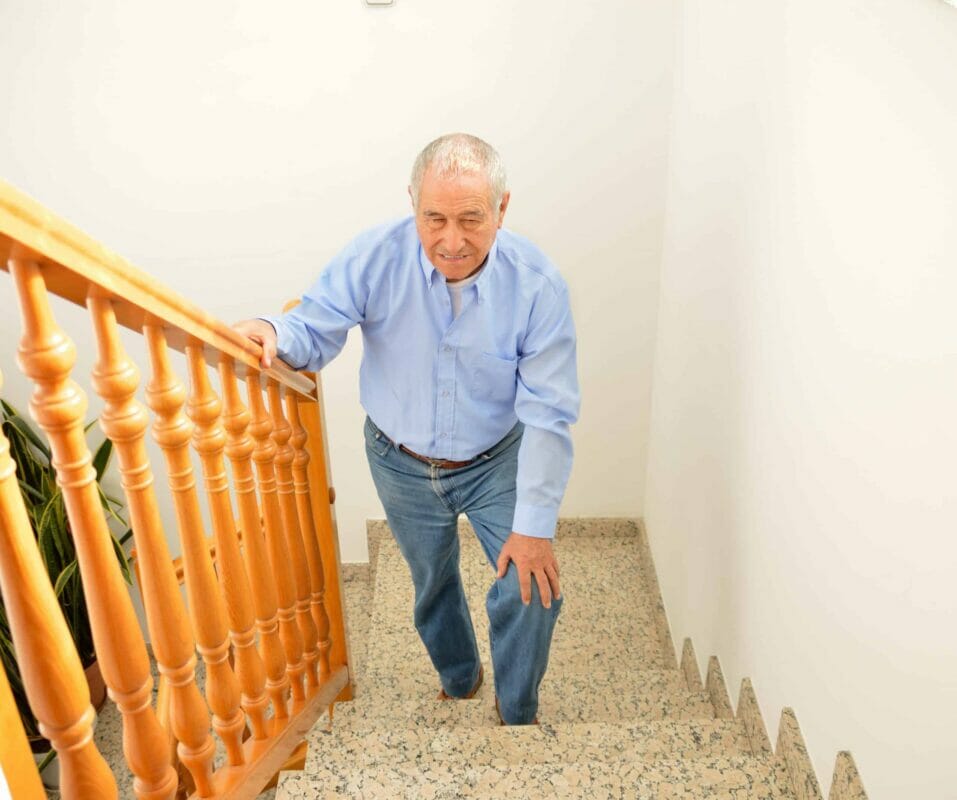









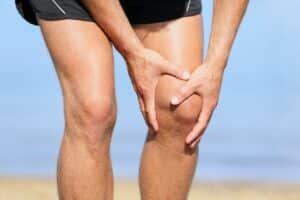
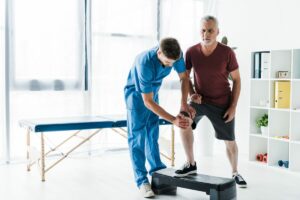

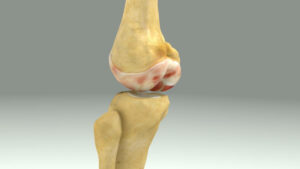
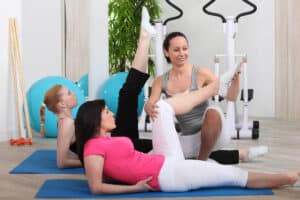

27 Responses
Saw your tips on feelgoodlife. com about
exercising knees. Simple and easy. Hope
you approve of my habit of climbing the
stairs. I turn both my feet slightly outward and see to it that I don't climb on
my toes. I feel this somehow reduces the
strain on my knees. Your reply would be
most appreciated.
Question, Todd. Have you sent out any exercises that would be especially good for the knees in the swimming pool?
If so, would love to see them.
Thanks!
Leah, here is an article full of exercises that can be done in the pool: https://www.feelgoodlife.com/water-exercises-for-seniors-with-arthritis/ I hope this is helpful for you!
Where can I buy the book
Margaret, you can purchase our Feel Good Knees program here: https://www.feelgoodlifeshop.com/collections/pain-relief/products/feel-good-knees?variant=22356526334012
This is helpful. I have problem going down the stairs. It feels I can't bend my right knee enough to accommodate the left foot to go to the next step down. So I go down one step at a time. Any suggestion for improving the bending range for my right knee?
Ron, heel slides with belt or dog leash can help increase range of motion! If you try out the exercise, please let us know how it works for you!
I follow your exercises every morning in hopes that it will strengthen my knees. I twisted my left knee almost a year ago. I tried injections on my knees, but it really didn't help. My doctor said I will probably need arthroscopy surgery. I have arthritis in both knees, but the left knee that I injured is not getting any better. It feels really tight, very painful, and sometimes it feels like it wants to give out on me. I'm going to keep at these exercises, but it's not taking away the pain. Any suggestions?
Hi Donna! Are you following the Feel Good Knees program? What phase are you on?
Excellent advice but to have the willpower to stick to it!! Thank you for the tips.
That's true, having the willpower can be a big hurtle. For myself, I have found that incorporating exercises at the same time each day has helped because then it just feels like a part of my routine. Just like brushing my teeth!
Thank you for these tips. I hope they help my recent slight wobble I’ve acquired descending stairs. I fell down them a few months ago and hyper extended my patella (by landing and sitting on my heels with my feet pointed back) my ortho ordered an mri and said I have deep bruising where the patella is. I also have bursitis on the inside of the same knee. It’s mostly painful to stand up from a sitting position and going up stairs.
OUCH! That sounds super painful! Now that you're a few months out from injury, these exercises will be perfect for you. They can be helpful for bursitis too. The key here is listening to your body. If it hurts, back off a little but don't give up!
I am dragging my left knee to walk and can’t bend it due to osteoarthritis. I am doing PT, accupuncture, and take vitamins. Nothing seems to work and I really don’t want to go for surgery. I am going to try these exercises and hoping for a miracle. Any suggestions? Thanks.
Hi Louna, I am so sorry to hear that. The first two exercises in this article may actually be a little too hard for your knee. I would recommend doing the last two and check out this article: https://www.feelgoodlife.com/knee-exercises-from-bed/. If you have access to a pool, some aquatic exercises may also be very beneficial.
Hi Todd, I bought your full knee pain package and have yet to download! Today is the day. I awoke with a swollen, painful left knee and a painful left shoulder. The right knee is just king of bothersome. And on and on.
I actually live in Mexico and have many friends who could use this information. Is it available in Spanish? If not could I have permission to translate? Thank you.
Hi Sandra, yes today is the DAY!! And since I'm replying a few days late, I hope you're on day three 😉 At this time it isn't available in Spanish but go ahead and translate it for your friends. You guys can get strong, healthy knees together!
Thank you for all your help Todd, I will start these today. It’s such a relief not to have to go through pages and pages only to find you have to pay large amounts of money or listen to 20 minutes of boring repetitive talk and still have to pay at the end!
You're so welcome June! Truly happy to help 🙂
Thanks for the exercises and the explanations behind them. To me, it makes a big difference to understand the physiology behind a specific movement. My knee pain is due to both injury and OA.
You're welcome Robin! I totally agree that it helps to know why you are doing the exercise. I wish you strong, healthy knees!
Love the tips!!!
Glad you like this article! When do you struggle with knee pain?
I am happy that you are recommending these exercises for climbing the stairs.
I can only use one leg, foe a while I have been avoiding using my left leg, so
It is very weak,
I am walking a mile daily and doing something me suiting exercises
I improved a lot, I can now walk 1-1.5 miles.
I am
Going to start this routine. I will post the results
How often do I do it?
That's awesome Maria! I would recommend doing these exercises every other day.
My original mistake was using too much strapping on my knees. Instead of doing things to strengthen them. Bb1
I totally get it! Bracing can be helpful but must be combined with strengthening 🙂 I'm glad you figured out your problem. Are you in pain?